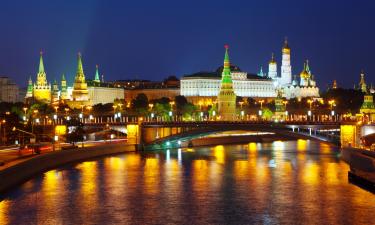High winds hamper in cleanup of Russian oil spill

Strong winds are the most serious obstacle for the crew trying to clean up spreading tons of petroleum that coated the shoreline near southern Russia seaport – the result of the storm that sank at least 11 ships and split an oil tanker in two.
Se the photos here.
Officials called the tanker's breakup an environmental disaster for the region, and warned that the 2,000 metric tons (2,200 short tons) of spilled fuel oil, which has already killed more than 30,000 birds, could cause long-lasting damage to marine life.
Officials said high winds were preventing salvage teams from launching an effort to sweep the oil off the water's surface, allowing more of the tarry substance to drift to the seabed, where it could linger for years.
"Oil is falling on the sea floor, and that will result in an increased concentration of oil in the water for at least five years," said Yelena Vavila, an expert with the regional environmental monitoring agency.
Regional Gov. Alexander Tkachev said it was impossible to estimate how much damage would be done to the region's fisheries. "The damages are so great that it's hard to assess," he told reporters Monday. "It can be equated with an ecological catastrophe."
Sunday's storm battered vessels plying the waters of the narrow Kerch Strait, connecting the Sea of Azov with the Black Sea.
Oleg Mitvol, the head of the Russian state environmental safety watchdog, Rosprirodnadzor, said that the most important task now was to build a dam across the strait to prevent the spill from floating into the Sea of Azov. "We have a real chance to save the ecosystem of the Sea of Azov," he said.
That effort, however, could face diplomatic obstacles, because Russia and Ukraine have a long-running argument over who controls what parts of the waterway. Ukraine has objected in the past to Russian plans to build a similar dam, claiming it was an attempt to strengthen Moscow's claim to a disputed island.
Russian Prime Minister Viktor Zubkov headed to the Black Sea region Tuesday to assess the damage and work with Ukrainian officials on the cleanup effort.
Meanwhile scores of birds, weighed down by thick coatings of the fuel oil, hopped weakly along the shore or sat helplessly in the sand. Workers with pitchforks and shovels collected vast clumps of oil mixed with sand, seaweed and dead birds.
The spill occurred when storm winds Sunday battered an oil tanker, the Volganeft-139, and broke it in two. About half of the Volganeft-139's cargo of 4,800 metric tons (1.3 million gallons) of fuel gushed into the water, officials estimated. The craft's 13 crew members were rescued.
As many as 10 other ships sank or ran aground in the storm in the gale, including the freighter Nakhichevan, which broke up and spilled a load of sulfur, officials said.
The bodies of three of the Nakhichevan's crew members washed up on shore Monday.
Rescuers continued Tuesday to hunt for five missing crewmen, said Sergei Kozhemyaka, a spokesman for the Emergency Situations Ministry.
Two other freighters loaded with sulfur sank as well.
Russian and U.S. environmental officials said the spilled sulfur posed no immediate environmental threat.
Maxim Stepanenko, a regional prosecutor, told the Russian television channel Vesti 24 that captains had been warned Saturday about the stormy conditions. He said the Volganeft-139 - designed during Soviet times to transport oil on rivers - was not built to withstand a strong storm.
Subscribe to Pravda.Ru Telegram channel, Facebook, RSS!




